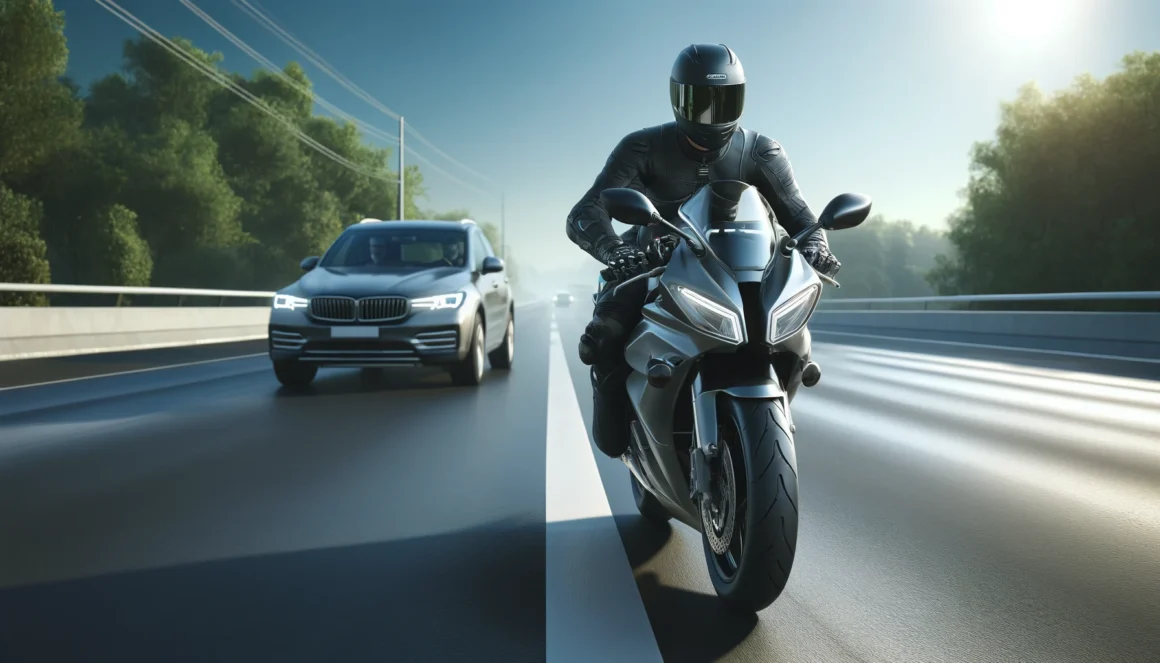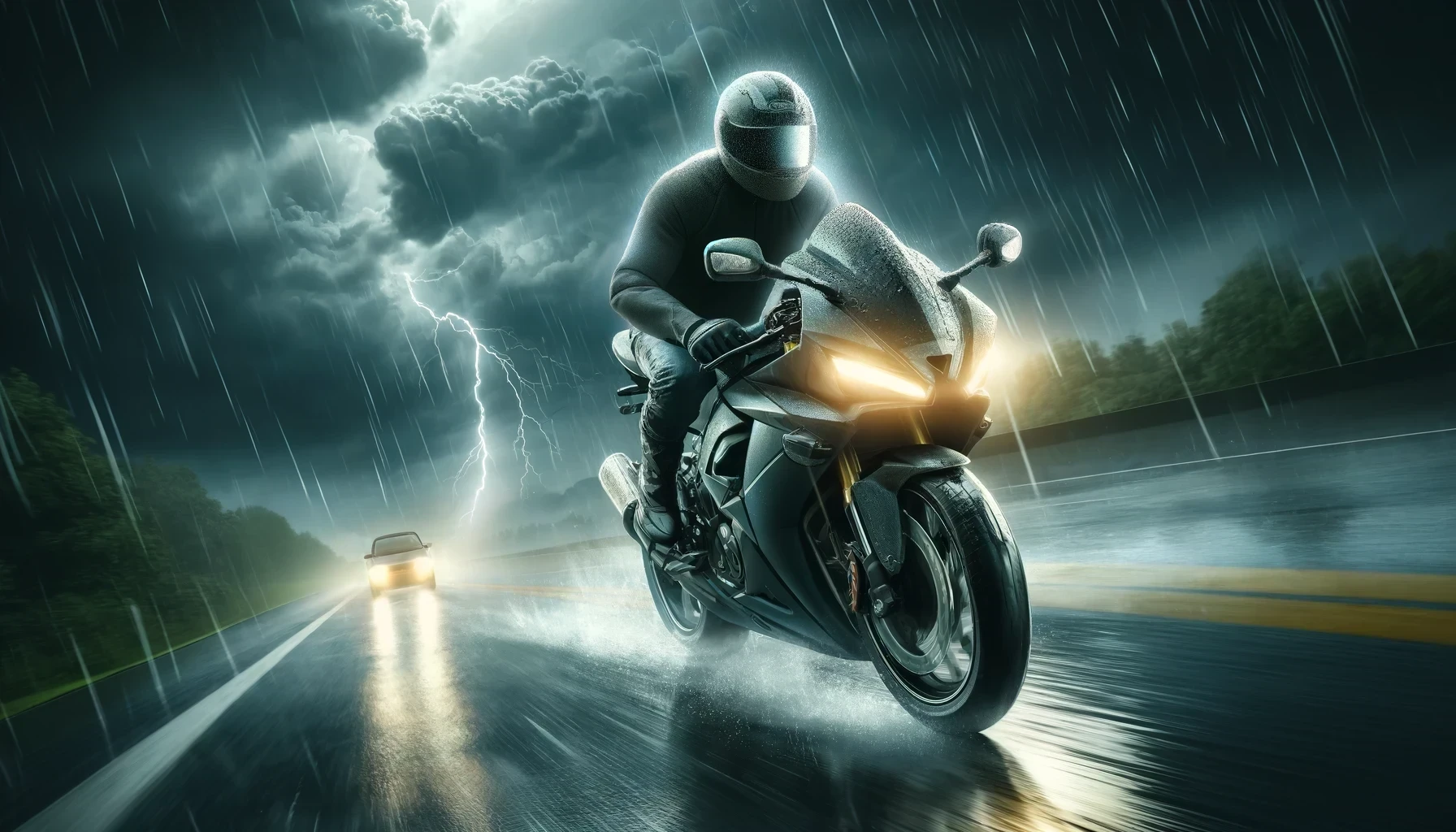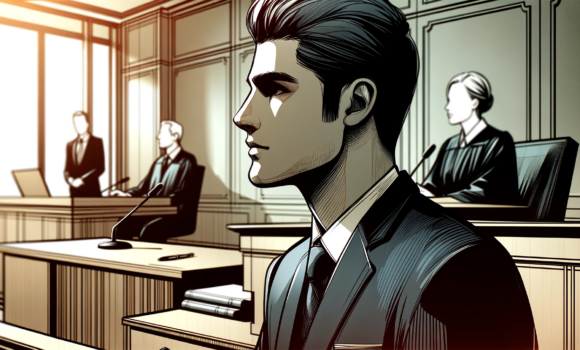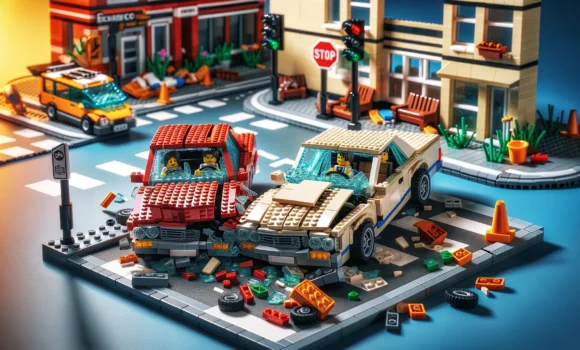It’s Motorcycle Season: 15 Tips to Safely Share the Road with Motorcycles

As the temperatures climb and the days grow longer, the thrill of the open road calls to motorcyclists across the country. This increase in motorcycle traffic presents unique challenges to drivers of cars and trucks. Sharing the road safely is crucial for reducing accidents and ensuring that everyone—whether on two wheels or four—gets where they’re going without incident. Here’s an in-depth look at the top 15 safety tips for sharing the road with motorcycles.
1. Check Your Blind Spots
Motorcycles’ compact size allows them to easily fit into the blind spots of larger vehicles. These are areas around your vehicle that you cannot see through your mirrors alone. Before changing lanes or merging, it’s vital to turn your head to check these areas physically. For example, a motorcycle could be right next to you as you prepare to change lanes, hidden from view by your car’s B-pillar. Especially on highways, where motorcycles move faster, an unchecked blind spot can lead to a catastrophic collision.
Drivers should make it a habit to perform a ‘head check’ by looking over their shoulder before making any lateral moves. Additionally, adjusting your mirrors to minimize blind spots and being extra vigilant in high traffic areas can help detect motorcycles. It’s also a good idea to anticipate a motorcyclist’s movements; if traffic is slowing down, a motorcycle may decide to change lanes quickly, and being aware of this possibility helps in preventing accidents.
Moreover, at intersections, a quick double-check can make a big difference. Motorcycles might approach more quickly than anticipated or come from directions you might not initially see. Taking an extra moment to look can prevent a turn that cuts off or collides with a motorcycle.
2. Use Your Signals Early
Effective communication through signals is essential for safe driving, particularly when sharing the road with motorcycles. Early signaling gives motorcycle riders enough time to react to your actions, whether you plan to turn or change lanes. This is crucial because motorcycles are more agile and can change speed or direction suddenly in response to your movements.
For instance, if a driver signals right before turning, a following motorcyclist may not have adequate time to slow down or adjust their position, leading to close calls or rear-end collisions. By signaling well in advance, you provide everyone on the road, especially motorcyclists who are directly affected by your movements, with a clear indication of your intentions, allowing for a smoother, safer flow of traffic.
It’s also important to ensure your vehicle’s signaling devices are working properly. Regular checks and maintenance keep these vital tools functional, preventing miscommunication or accidents caused by a burned-out signal bulb.
3. Maintain a Safe Following Distance
Keeping a safe distance from all vehicles is a basic rule of the road, but it’s especially important when following motorcycles. Motorcycles can stop much quicker than cars can, and they are also more susceptible to changes in road conditions. A safe following distance ensures you have time to react if the motorcycle in front of you stops abruptly or swerves to avoid a hazard.
A general rule is to maintain a minimum of a three to four-second following distance in good conditions. In poor weather, this should be extended even further. Consider situations like sudden traffic stops, where a motorcycle might be able to stop or maneuver past obstacles more quickly than a car. Without sufficient space, a driver risks rear-ending the motorcycle, potentially causing serious injury to the rider.
In addition to preventing collisions, a generous following distance helps riders feel less pressured. Motorcyclists are acutely aware of nearby vehicles, and being tailgated can cause them to take risky maneuvers to create space, leading to dangerous situations for everyone involved.
4. Be Cautious at Intersections
Intersections are hotspots for vehicle accidents, and the dynamics of motorcycles can complicate these situations further. Drivers should exercise additional caution at intersections, taking extra time to look for motorcycles. Because of their smaller size and speed, motorcycles might appear farther away than they are, or be obscured by other vehicles, leading to misjudgments in gap assessments.
When approaching an intersection, especially when preparing to turn left, it’s crucial to anticipate that a motorcycle could be crossing your path or speeding up to make the light. These situations are often where misjudgments occur, as the motorcycle’s speed and distance might be harder to calculate than those of larger vehicles. Making eye contact with riders, if possible, can also help gauge their intentions and ensure mutual awareness.
Additionally, be mindful of motorcycles when stopped at intersections. When you’re ready to go, a quick second look for motorcycles can prevent a turn that cuts them off, particularly in scenarios where your view may be partially blocked by parked vehicles, foliage, or road signage.
5. Avoid Distractions
Distracted driving is a leading cause of road accidents, and even a momentary lapse can be fatal, especially when motorcycles are involved. Engaging with your phone, adjusting the radio, or other distractions can impair your ability to react to the quick movements of motorcycles.
For instance, if a driver is looking at their phone, they might not see a motorcycle changing lanes or may miss a motorcycle’s turn signal. This increases the risk of sideswiping the motorcycle or cutting it off during lane changes. Keeping your full attention on the road helps you stay aware of your surroundings, including any motorcycles that might be maneuvering around you or changing speeds quickly.
Distraction-free driving not only helps in spotting motorcycles but also in responding effectively to emergencies or unexpected moves from motorcycles. For example, if a motorcycle suddenly stops due to a road hazard, a focused driver can quickly adjust speed or change lanes safely, avoiding a crash.
6. Watch for Lane Splitting
Lane splitting, where a motorcycle drives between two lanes of stopped or slowly moving cars, is legal in some states. It allows motorcyclists to navigate through traffic jams more efficiently than cars can. However, it requires car and truck drivers to be particularly vigilant, as motorcycles may appear alongside them suddenly.
When traffic slows, it’s wise to keep an eye out for motorcyclists who may take advantage of lane splitting. Drivers should avoid making sudden lane changes without checking mirrors and blind spots, as this can lead to a collision with a lane-splitting motorcycle. Additionally, maintaining a steady position within your lane can provide a safer path for motorcyclists to navigate through tight spaces.
Encouraging safe lane splitting also means being patient and not obstructing a motorcyclist’s path intentionally. Acknowledge that lane splitting helps alleviate traffic congestion and can be performed safely if both motorcyclists and drivers remain aware of each other and follow road regulations.
7. Respect Weather Conditions

Adverse weather conditions pose a significant challenge for motorcyclists. Rain, fog, and strong winds can reduce a rider’s ability to control their bike and decrease visibility. As a car or truck driver, it’s crucial to adapt your driving behavior under these conditions to avoid putting motorcyclists at further risk.
During rainy or foggy weather, increase your following distance as road surfaces become slippery, and stopping distances may increase for all vehicles, especially motorcycles. Be particularly cautious at intersections and on curves where motorcyclists may have to slow down or stop unexpectedly.
In windy conditions, be aware that motorcyclists will be battling to keep the bike stable. Avoid passing too closely as the draft from your vehicle can unsettle the motorcycle even further. If you see a motorcyclist struggling against the wind, give them plenty of space and pass only when it’s absolutely safe to do so.
8. Understand Motorcycle Signals
Motorcycle signals can sometimes be confusing. Unlike cars, not all motorcycles have self-canceling turn signals, which can lead some riders to forget to turn them off after a maneuver. As a driver, it’s important to not always rely on the assumption that a signaling motorcycle is about to turn or change lanes.
If you notice a motorcycle with its turn signal on for an extended period, provide them with some additional space and be prepared for a potential turn or lane change, but also remain alert to the possibility that the signal may have been left on by mistake. Patience and caution are key—wait to see definitive action before proceeding.
When following a motorcycle, watch for hand signals as well. Motorcyclists often use hand signals to indicate turns or stops when the electronic signals are not working, or as an extra measure of safety.
9. Yield to Oncoming Motorcycles
Turning left in front of an oncoming motorcycle is a common cause of serious traffic accidents. The smaller profile of motorcycles can make it difficult for drivers to judge their speed and distance accurately. Always err on the side of caution and assume that the motorcycle is closer and approaching faster than it appears.
Before making a left turn, look specifically for motorcycles, and wait until they have passed safely. Misjudging the speed of an oncoming motorcycle can lead to a collision, with the motorcyclist usually suffering more severe consequences.
Additionally, when yielding to motorcycles, make your intentions clear and predictable by using your turn signals and making eye contact with the rider if possible. This not only increases safety but also helps to foster mutual respect and understanding between drivers and motorcyclists.
10. Be Aware of Road Hazards
Small objects or irregularities in the road surface that may be minor annoyances to car drivers can pose serious dangers to motorcyclists. Potholes, oil slicks, puddles, debris, and even small animals can cause a motorcyclist to lose control.
When driving near motorcycles, be aware of the road conditions ahead. If you spot a potential hazard, give the motorcyclist time and space to navigate safely around it. Do not swerve suddenly to avoid an obstacle without ensuring it is safe to do so, as this could startle a motorcyclist riding nearby.
If safe, consider signaling to a following motorcyclist with a hand gesture (pointing to the ground can indicate a hazard in the road) to help them prepare for the obstacle. This kind of road-sharing courtesy can prevent accidents and improve safety for all road users.
11. Night Driving
Visibility is crucial for safe driving, and at night, the risk of accidents increases. Motorcycles are less visible than cars because of their smaller size and single headlight, which can sometimes blend into the lights of other vehicles.
When driving at night, make sure your headlights are properly adjusted so they illuminate the road effectively without blinding other drivers. Keep an eye out for the distinctive single headlight of motorcycles. Extra vigilance is needed because motorcycles can appear suddenly from the darkness, especially at intersections or when they are overtaking.
Additionally, when following a motorcycle at night, reduce the brightness of your headlights if possible (switch from high to low beam). This prevents the motorcyclist from being blinded via their mirrors, which can compromise their ability to navigate safely.
12. Group Riding
Motorcyclists often travel in groups, which can be intimidating to other drivers. It’s important to understand that group riding is a safety practice for motorcyclists, as it makes them more visible and allows riders to watch out for each other.
When encountering a group of motorcyclists, avoid cutting through the group. This can be dangerous, as it disrupts the group’s dynamics and can confuse the riders, leading to potential accidents. Instead, treat the group as a single large vehicle. Give them plenty of space, and only pass if you can see that the road ahead is clear and you can overtake the entire group safely and swiftly.
Respect the group’s lane position as well. Motorcyclists in groups tend to ride in a staggered formation to maintain a safe distance from each other while maximizing visibility. Understanding and respecting this arrangement helps prevent accidents and allows for safer interactions on the road.
13. Pass with Care
When overtaking a motorcycle, do so swiftly and give them as much space as possible. The turbulence created by your vehicle can be unsettling for motorcyclists. Pass cleanly and quickly to minimize the time spent side by side, reducing the impact of air displacement on the motorcycle.
Ensure you have sufficient space to return to your lane; cutting in too close after passing can force the motorcyclist to brake suddenly or swerve, leading to dangerous situations. Always use your signals when passing to communicate your intentions clearly, allowing the motorcyclist to prepare for your actions.
It’s also courteous to check your mirrors after passing before you change back into the lane. Ensure you can see the motorcycle in your rear-view mirror, indicating enough space has been left.
14. Be Predictable
Sudden moves by cars and trucks can be particularly dangerous for motorcyclists. Maintaining a predictable pattern of behavior—signaling intentions well in advance, sticking to your lane, following traffic signals, and not making abrupt stops or changes in speed—can significantly enhance road safety.
This predictability allows motorcyclists to anticipate your actions and respond appropriately. For instance, if you gradually slow down to stop at a light, a following motorcyclist can do the same without abrupt braking, which might lead to a skid or rear-end collision.
By avoiding erratic driving behaviors, you help create a safer, more predictable roadway for everyone, especially those on motorcycles who might have less physical protection than those in vehicles.
15. Educate Yourself and Others
Understanding the unique challenges faced by motorcyclists and educating other drivers about these issues is vital for creating a safer driving environment. Share the knowledge you gain about motorcycle safety with your family and friends. Advocate for motorcycle safety in your community, perhaps by supporting or organizing road safety workshops.
Increased awareness builds a community of drivers who are more considerate of each other’s space and safety needs on the road. Motorcyclists and vehicle drivers alike benefit from improved understanding and mutual respect, which lead to fewer accidents and a more enjoyable driving experience for everyone.
Sharing the road safely with motorcyclists is not just about following rules; it’s about fostering a culture of mutual respect and understanding. By being vigilant, considerate, and informed, drivers can significantly reduce risks and ensure that the roads are safe for all travelers, regardless of how many wheels their vehicle has.
Tell Us About Your Case
Contact us today at (417) 887-4300 or online to arrange your free case evaluation. Our Experienced Trial Attorneys will walk you through your legal options.


